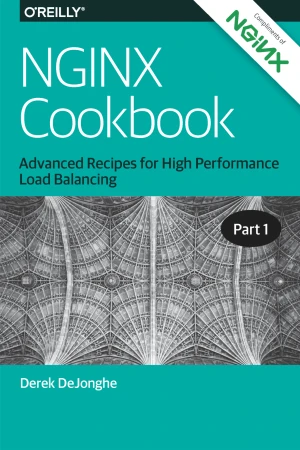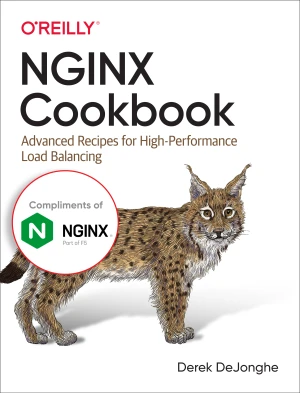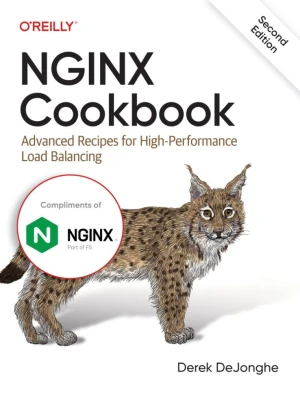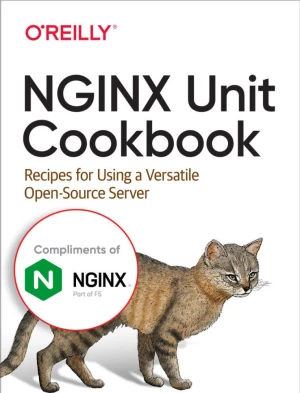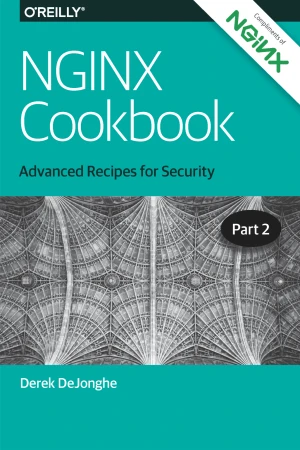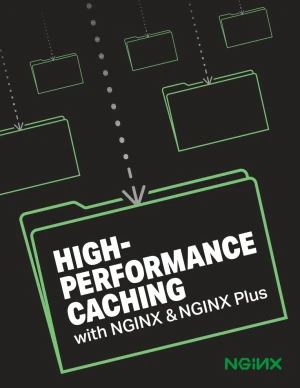NGINX Cookbook, Part 3
Advanced Recipes for Operations
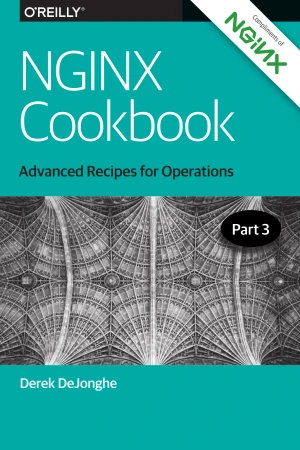
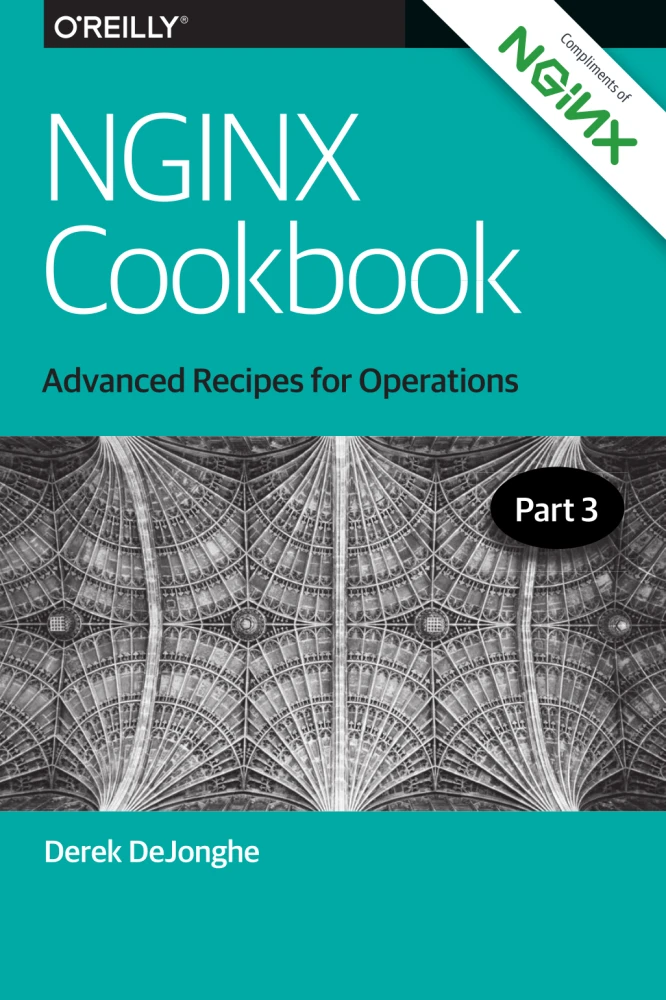
Book Details
| Author | Derek DeJonghe |
| Publisher | O'Reilly Media |
| Published | 2017 |
| Edition | 1st |
| Paperback | 79 pages |
| Language | English |
| ISBN-13 | 9781491968956 |
| ISBN-10 | 1491968958 |
| License | Compliments of Nginx |
Book Description
This is the third and final installment of the NGINX Cookbook. This book is about NGINX the web server, reverse proxy, load balancer, and HTTP cache. This installment focuses on deployment and operations of NGINX and NGINX Plus, the licensed version of the server. Throughout this installment the reader will learn about deploying NGINX to Amazon Web Services, Microsoft Azure, and Google Cloud Compute, as well as working with NGINX in Docker containers. This installment digs into using configuration management to provision NGINX servers with tools such as Puppet, Chef, Ansible, and SaltStack. It also gets into automating with NGINX Plus through the NGINX Plus API for on-the-fly reconfiguration and using Consul for service discovery and configuration templating. The reader will explore using an NGINX module to conduct A/B testing and acceptance during deployments. Other topics covered are using NGINX's GeoIP module to discover the geographical origin of clients, including it in logs, and using it in logic. The reader will learn how to format access logs and set log levels of error logging for debugging. Through a deep look at performance, this installment provides the reader with practical tips for optimizing their NGINX configuration to serve more requests faster. It helps the reader install, monitor, and maintain the NGINX application delivery platform.
This book is published as open-access, which means it is freely available to read, download, and share without restrictions.
If you enjoyed the book and would like to support the author, you can purchase a printed copy (hardcover or paperback) from official retailers.
Download and Read Links
Share this Book
[localhost]# find . -name "*Similar_Books*"
NGINX Cookbook, Part 1
This is the first of three installments of NGINX Cookbook. This book is about NGINX the web server, reverse proxy, load balancer, and HTTP cache. This installment focuses mostly on the load balancing aspect and the advanced features around load balancing, as well as some information around HTTP caching. The book touches on NGINX Plus, the licensed
NGINX Cookbook
NGINX is one of the most widely used web servers available today, in part because of its capabilities as a load balancer and reverse proxy server for HTTP and other network protocols. This cookbook provides easy-to-follow examples to real-world problems in application delivery. The practical recipes will help you set up and use either the open sour
NGINX Cookbook, 2nd Edition
NGINX is one of the most widely used web servers available today, in part because of itscapabilities as a load balancer and reverse proxy server for HTTP and other network protocols. This revised cookbook provides easy-to-follow examples of real-world problems in application delivery. Practical recipes help you set up and use either the open source
NGINX Unit Cookbook
Alongside its popular web server, NGINX provides a dynamic application server that supports configuration through a RESTful JSON API. The open source NGINX Unit server deploys configuration changes without service disruptions and runs apps built with multiple languages and frameworks. This updated cookbook shows developers, DevOps personnel, networ
NGINX Cookbook, Part 2
This is the 2nd of three installments of NGINX Cookbook. This book is about NGINX the web server, reverse proxy, load balancer, and HTTP cache. This installment focuses on security aspects and features of NGINX and NGINX Plus, the licensed version of the NGINX server. Throughout this installment the reader will learn the basics of controlling acces
High-Performance Caching with Nginx and Nginx Plus
One of its most important capabilities is content caching, which is a highly effective method for improving a website's performance. In this ebook, the authors describe how NGINX caches content, how to implement caching and cache clustering, and some of the ways to improve performance. The text provides a deep dive into how content caching truly wo

